Rural Healthcare Case 1
Tap the yellow hotspots to see more information on the selected object.
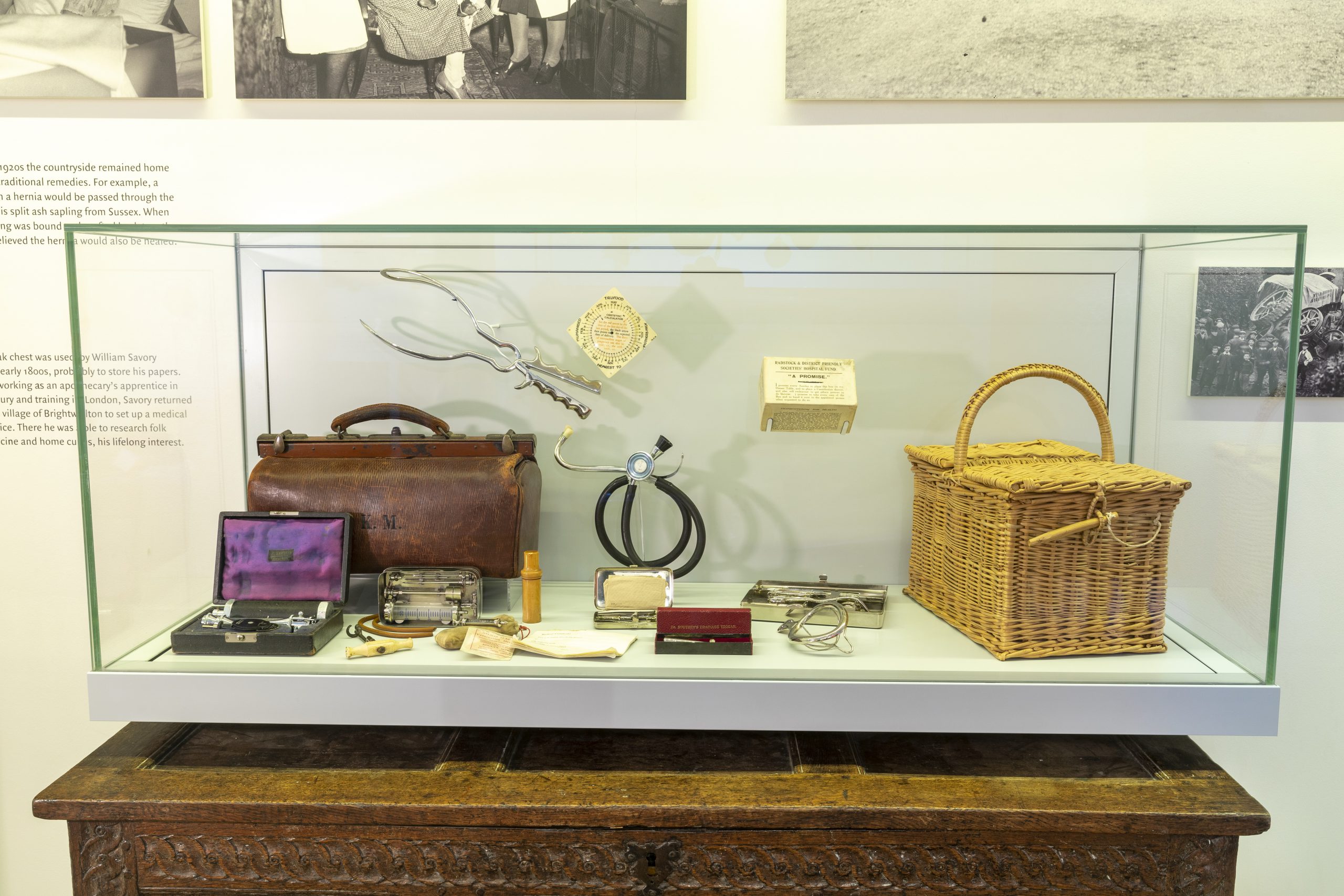
Vaccination Dressing
Doctor's Certificate
Mask
Stethoscope
Trochar
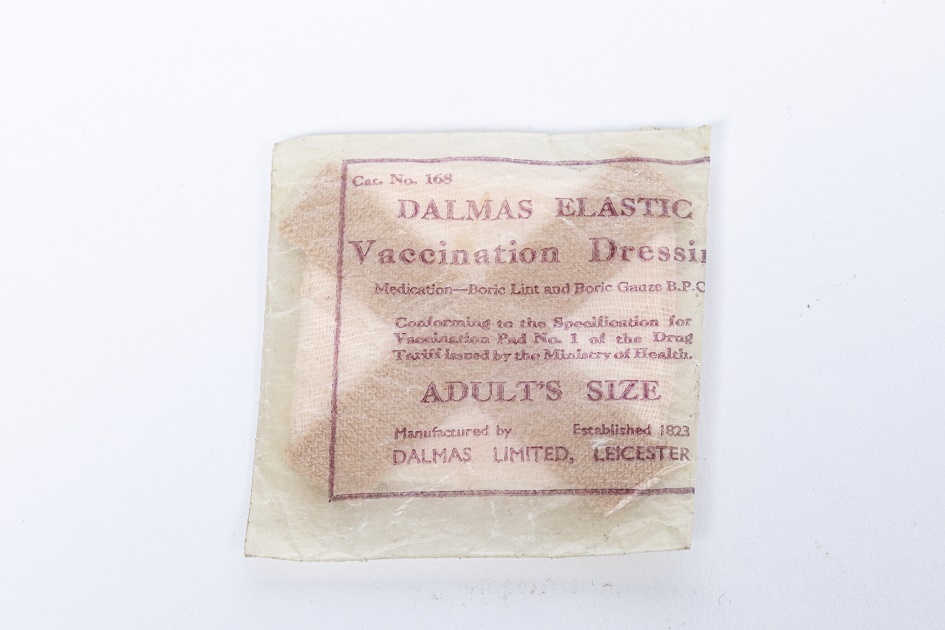
Vaccination Dressing
The dressing is to cover the area of skin where the vaccination has been given by injection. Vaccination stimulates the body’s immune system to protect a person against disease. Smallpox was a highly infectious disease which began with a fever and a rash that spread all over the body. The rash then turned into pustules. Many cases were fatal.
In 1796, the physician Edward Jenner noticed that milkmaids in his area of Gloucestershire were often immune to smallpox. Their work brought them into contact with cowpox, a mild disease of cattle. Jenner injected a boy with cowpox matter and the boy was later immune to smallpox. This is thought to have been the first ever vaccination.
BMHC 2010.16.30

Doctor's Certificate
These certificates are those required by the National Insurance Act 1911. This act, sponsored by Lloyd George, introduced the first national sickness insurance, initially only for working men. This was the first step on the road to the formation of the NHS in 1948. National Insurance provided welfare provision for workers. The act provided for sick pay and unemployment pay in some industries. Workers would receive 10 shillings per week for the first 13 weeks of sickness and then 5 shillings a week for a further 13 weeks if absent longer. Funding National Insurance came from the worker, employer and taxation. For the health-related aspect of National Insurance the worker paid 4d per week into the insurance fund; the employer 3d and taxation 2d.
BMHC 2010.16.29
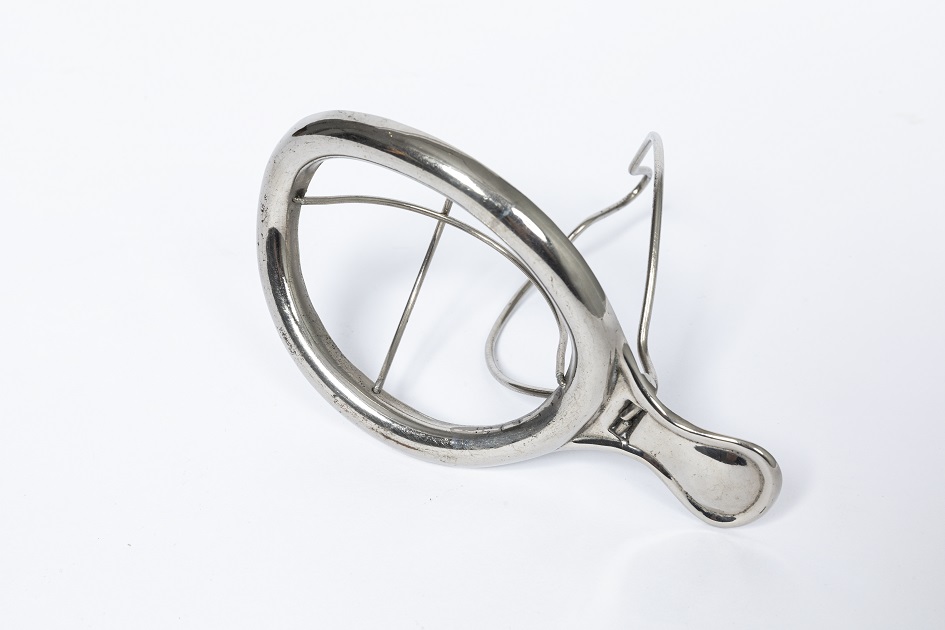
Mask
The Schimmelbusch mask, a system for delivering anaesthetic, was invented in 1889, and was used until the 1950s. The device consists of a wire frame which is covered with gauze and placed over the patient’s mouth and nose. Then high-volatility anaesthetic – usually ether or chloroform – were dripped on it, allowing the patient to inhale a mix of the evaporated anaesthetic and air. “The rag and bottle technique” would have been the method of anaesthesia used by GPs, before the days of the NHS, when performing minor surgery in patients’ homes. One tale has been told of a child who had his tonsils removed on the kitchen table, in the 1920s, in Ealing.
BMCH 1979.1.19
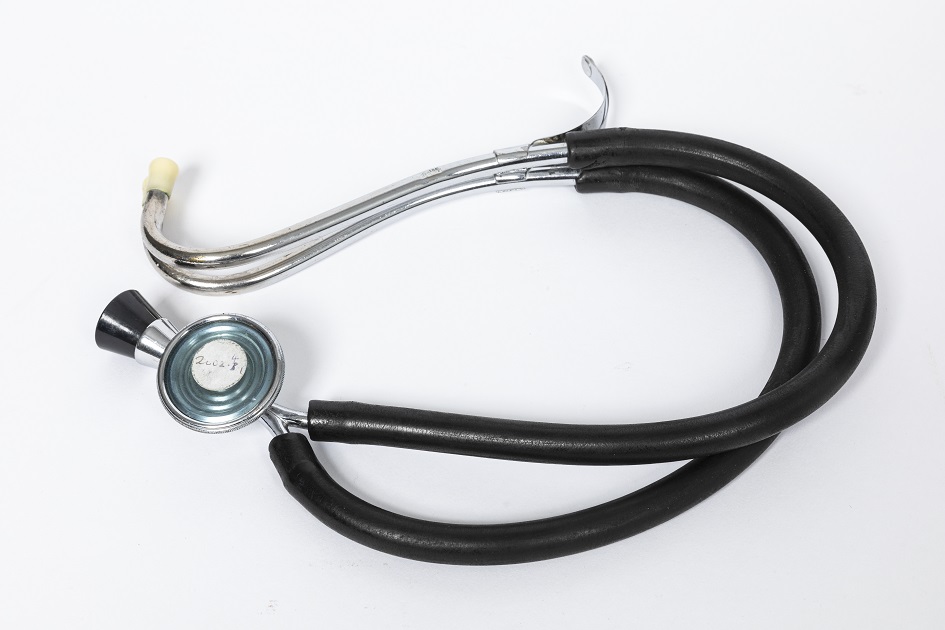
Stethoscope
A stethoscope is used for listening to the internal sounds of the body in the lungs, heart and bowels. French physician René Laennec invented the stethoscope in 1816. He considered it improper to listen to the sounds of the heart of a female patient by putting his head directly on her chest. Instead, he rolled up a piece of paper into a tube and placed one end on her chest and the other at his own ear. He subsequently developed a robust wooden tube to replace the makeshift paper one.
In the 1850s the hollow wooden tube was replaced by the binaural stethoscope. These stethoscopes featured two earpieces connected by a tube to a ‘bell’ that is placed on the body.
Most of the objects in this case are on loan from the Berkshire Medical Heritage Centre. Many thanks for their permission to highlight these objects on the tour.
BMHC 2002.4.1
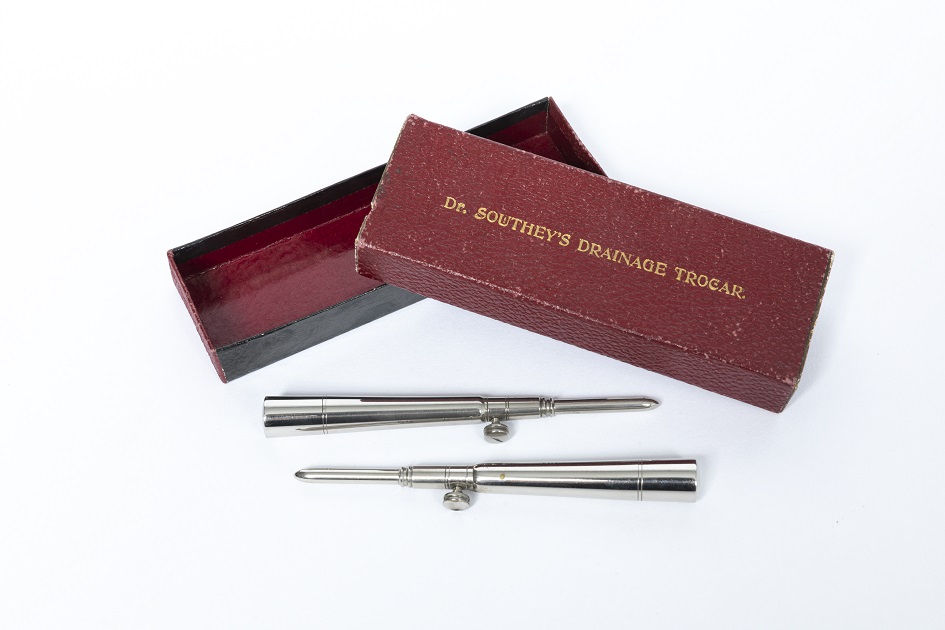
Trochar
A trocar is a surgical instrument with a sharp point which is used to create a hole in the body which can be used to introduce surgical tools. This trocar was used by a General Practitioner (GP) in the first half of the 20th century. It would probably have been used to perform a tracheotomy in a case of Diphtheria. A membrane forms over the top of the trachea, windpipe, and causes asphyxia. The trocar was used to make a hole in the trachea and a tube called a canula was then inserted to keep the hole open so the patient could breathe.
This was a lifesaving procedure. Diphtheria was rife in England until compulsory vaccinations were introduced in the early 1940s.
BMHC 2010.16.13